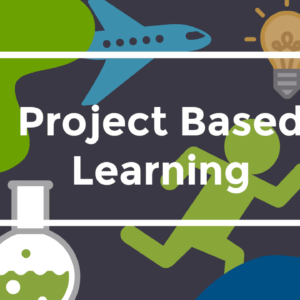
PBL, or project-based learning, is a method of instruction that places a strong emphasis on student engagement via the completion of practical projects. It has a number of advantageous benefits on education. The following are some advantages of project-based learning:
Active learning:
PBL promotes active learning by getting students involved in practical, inquiry-based activities. Students actively engage in the learning process as opposed to passively absorbing information, which improves their comprehension and memory of what they have learned.
Critical thinking abilities
PBL encourages critical thinking abilities by giving students difficult issues or difficulties to resolve. Students gain knowledge in information analysis, contrasting viewpoints, and coming up with original solutions. They gain the ability to think critically, make wise choices, and apply their knowledge in real-world settings.
Collaboration and teamwork are fostered among students through PBL. Students are frequently required to work in groups on projects, which promotes collaboration, communication, and idea sharing. They gain the ability to work well together, appreciate differing points of view, and take advantage of one another’s advantages to accomplish common objectives.
Real-world application
PBL links in-class learning to practical uses. The authentic projects that students complete allow them to apply their theoretical learning to real-world contexts. As a result, they are better equipped to handle challenges in the future by understanding the value and relevance of their education.
PBL improves student motivation and involvement in the learning process. Since the projects are frequently initiated by the students, they can explore areas of interest and take charge of their education. Problem-solving abilities: PBL improves students’ ability to solve problems. Students gain expertise in problem identification, analysis, research, and solution execution by taking on challenging assignments. They develop resilience and a growth mentality as they learn how to overcome hurdles, adjust to changes, and persevere through difficulties.
Knowledge from several disciplines: PBL promotes the synthesis of knowledge from various fields. Students must frequently use knowledge from multiple subjects to complete projects successfully. This interdisciplinary approach encourages a comprehensive understanding of subjects and aids students in realising how related they are to one another.
Communication and presentation abilities:
PBL helps students become better communicators and presenters. They gain the ability to clearly express their thoughts, exhibit their work in front of their peers and teachers, and defend their conclusions. Both academic and professional environments can benefit from having these talents.
Long-term retention:
PBL aids in information retention over the long term. PBL encourages lasting learning that goes beyond rote memorizing by involving students in active learning activities, linking concepts to practical applications, and fostering deep comprehension.
Thinking at a higher level:
PBL encourages higher-order thinking abilities like analysis, synthesis, and assessment. In order to complete complicated activities, students must use critical thinking, problem-solving, decision-making, and evaluation skills. Students are better prepared for increasingly difficult academic tasks and real-world problems thanks to this higher-level thinking.
Overall, project-based learning has several advantages, such as active learning, higher-order thinking, critical thinking, cooperation, real-world application, motivation, problem-solving abilities, interdisciplinary knowledge, and communication skills. Through the use of PBL in the classroom, students can acquire crucial abilities and skills for success in the 21st century.




